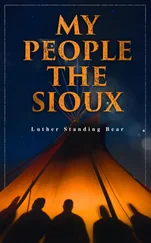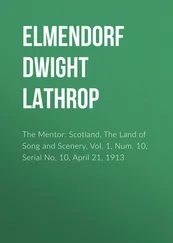The ceremony began, as usual, with the singers announcing the ceremony. Then mother walked to the center of the large circular enclosure carrying me in her arms and leading two splendid spotted horses. They were lively and spirited and pranced about a good deal while different groups took up the singing. An old man, considered an expert in piercing ears, came and stood beside mother. He carried instruments of bone, sharp and fine as needles. Father then came, and last of all the needy man who was to have the two spotted horses. There was more singing while the old man thrust my ears with the sharp instrument and father placed something in them which he had prepared for the purpose. For several days mother watched my ears carefully and soon they were ready for rings. The two holes in my ears cost father two valuable spotted horses.
Table of Contents
With the coming of boyhood, life became more lively and exciting and gradually my activities took me further away from the care and influence of the tipi. I still continued to learn, however, in the same manner in which I had learned as a babe—by watching, listening, and imitating. Only I watched my mother less and began to observe the ways of my father more. In time too, I took to watching the older boys and whatever they did I tried to do.
In Lakota society it was the duty of every parent to give the knowledge they possessed to their children. Each and every parent was a teacher and, as a matter of fact, all elders were instructors of those younger than themselves. And the instruction they gave was mostly through their actions—that is, they interpreted to us through actions what we should try to do. We learned by watching and imitating examples placed before us. Slowly and naturally the faculties of observation and memory became highly trained and the Lakota child became educated in the manners, lore, and customs of his people without a strained and conscious effort. I have known children to become very apt in learning the songs they heard. One singing would sometimes suffice and the child would have the words and tune so well in mind that he could never forget it.
This process of learning went on all the time. There was no period in the life of the Lakota child such as that referred to by some as the ‘playtime’ of life, when the child is growing only in body size and not in mind. Body and mind grew together. No one would be able to say how much can be learned through great keenness of sight and hearing unless, having possessed them, they were suddenly deprived of them.
But very early in life the child began to realize that wisdom was all about and everywhere and that there were many things to know. There was no such thing as emptiness in the world. Even in the sky there were no vacant places. Everywhere there was life, visible and invisible, and every object possessed something that would be good for us to have also—even to the very stones. This gave a great interest to life. Even without human companionship one was never alone. The world teemed with life and wisdom; there was no complete solitude for the Lakota.
Such living filled one with a great desire to do, to be, and to grow. In my boyhood, and in actual childhood, I was filled with the desire to be a brave and this desire urged me to constant activity. I was overjoyed when at the age of ten years my father arranged for me to accompany him on a war party. I was not the least bit afraid and was only sorry when for some reason we were forced to come home without having met the enemy.
The way in which Lakota children were trained caused them to regard with admiration all those of wisdom and experience. All yearned for wisdom and looked for experience. For myself, I felt that if I grew wise, my people would honor me; if I became very brave, I should be like father, and if I could become a good hunter, it would please my mother. And so I thrived upon the thought of achievement and approval and I do not think that I was an unusual Indian boy. Dangers and responsibilities were bound to come, and I wanted to meet them like a man. I looked forward to the days of the warpath, not as a calling nor for the purpose of slaying my fellowman, but solely to prove my worth to myself and my people.
One lesson to learn was to be strong in will. Little children were taught to give and to give generously. A sparing giver was no giver at all. Possessions were given away until the giver was poor in this world’s goods and had nothing left but the delight and joy of pure strength. It was a bounden duty to give to the needy and helpless. When mothers gave food to the weak and old they gave portions to their children at the same time, so that the children could perform the service of giving with their own hands. Little Lakota children often ran out and brought into the tipi an old and feeble person who chanced to be passing. If a child did this the mother must at once prepare food. To ignore the child’s courtesy would be unpardonable. But it is easy to touch the heart of pity in a child, so the Lakota was taught to give at any and all times for the sake of becoming brave and strong. The greatest brave was he who could part with his most cherished belongings and at the same time sing songs of joy and praise. It was a custom to hold ‘Give-away-dances’ and to distribute presents that were costly and rare. To give is the delight of the Lakota.
Such an education could not be confined to a certain length of time nor could one be ‘finished’ in a certain term of years. The training was largely of character, beginning with birth and continued throughout life. True Indian education was based on the development of individual qualities and recognition of rights. There was no ‘system,’ no ‘rule or rote,’ as the white people say, in the way of Lakota learning. Not being under a system, children never had to ‘learn this today,’ or ‘finish this book this year’ or ‘take up’ some study just because ‘little Willie did.’ Native education was not a class education but one that strengthened and encouraged the individual to grow. When children are growing up to be individuals there is no need to keep them in a class or in line with one another.
Never were Lakota children offered rewards or medals for accomplishment. No child was ever bribed or given a prize for doing his best. No one ever said to a child, ‘Do this well and I will pay you for it.’ The achievement was the reward and to place anything above it was to put unhealthy ideas in the minds of children and make them weak. Neither were lessons forced upon a child by an attitude of threat or by punishment. There was no such thing as the ‘hickory stick,’ and any Lakota caught flogging a child would have been considered unspeakably low. I have never heard of a child in my tribe leaving home on account of discontent or to escape parental rule. There could be no greater freedom elsewhere. Neither have I ever heard of young people committing suicide over studies or duties imposed upon them. Lovers occasionally planned death for themselves, but never children.
In the course of learning, the strength of one small mind was never pitted against the strength of another in foolish examinations. There being no such thing as ‘grades,’ a child was never made conscious of any shortcomings. I never knew embarrassment or humiliation of this character until I went to Carlisle School and was there put under the system of competition. I can never forget the confusion and pain I one day underwent in a reading class. The teacher conceived the idea of trying or testing the strength of the pupils in the class. A paragraph in the reading book was selected for the experiment. A pupil was asked to rise and read the paragraph while the rest listened and corrected any mistakes. Even if no mistakes were made, the teacher, it seems, wanted the pupils to state that they were sure they had made no errors in reading. One after another the pupils read as called upon and each one in turn sat down bewildered and discouraged. My time came and I made no errors. However, upon the teacher’s question, ‘Are you sure that you have made no error?’ I, of course, tried again, reading just as I had the first time. But again she said, ‘Are you sure?’ So the third and fourth times I read, receiving no comment from her. For the fifth time I stood and read. Even for the sixth and seventh times I read. I began to tremble and I could not see my words plainly. I was terribly hurt and mystified. But for the eighth and ninth times I read. It was growing more terrible. Still the teacher gave no sign of approval, so I read for the tenth time! I started on the paragraph for the eleventh time, but before I was through, everything before me went black and I sat down thoroughly cowed and humiliated for the first time in my life and in front of the whole class! Never as long as I live shall I forget my futile attempts to fathom the reason of this teacher’s attitude. Out on the school grounds at recess I could not join in the games and play. I was full of foolish fears.
Читать дальше












